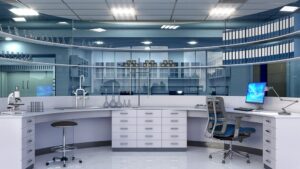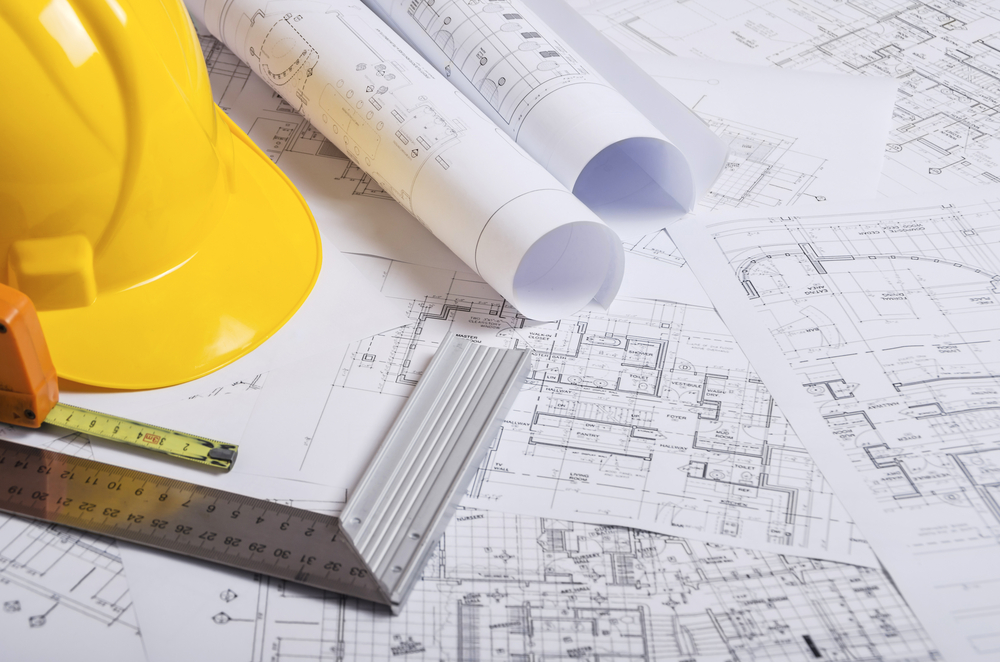
Choosing the right dry laboratory builder is a critical decision that can significantly impact the efficiency and success of your research facility. Unlike wet labs, dry labs typically do not require water, gases, or chemicals. However, they do demand precise environmental control, sophisticated data systems, and specialized equipment to support computational research, electronics, and other technology-driven fields.
Many research laboratories have wet and dry labs. The dry laboratory builder you select must not only understand these unique requirements, but also be capable of delivering a flexible and future-proof lab design that can adapt to evolving research needs.
In this article, we will guide you through the essential steps to identify and select a qualified dry laboratory builder. From understanding your specific requirements to evaluating potential builders’ expertise and project management capabilities, this comprehensive guide will equip you with the knowledge needed to make an informed decision. Whether you’re constructing a new facility or renovating an existing space, the right dry laboratory builder will help you create a state-of-the-art laboratory facility that enhances productivity and fosters innovation.
Understanding Your Requirements
Before embarking on the journey to find the right dry laboratory builder, it’s essential to clearly understand your specific requirements based on your type of research, type of space, or type of lab. This foundational step ensures that the builder you choose can meet your needs and contribute to the success of your research facility.
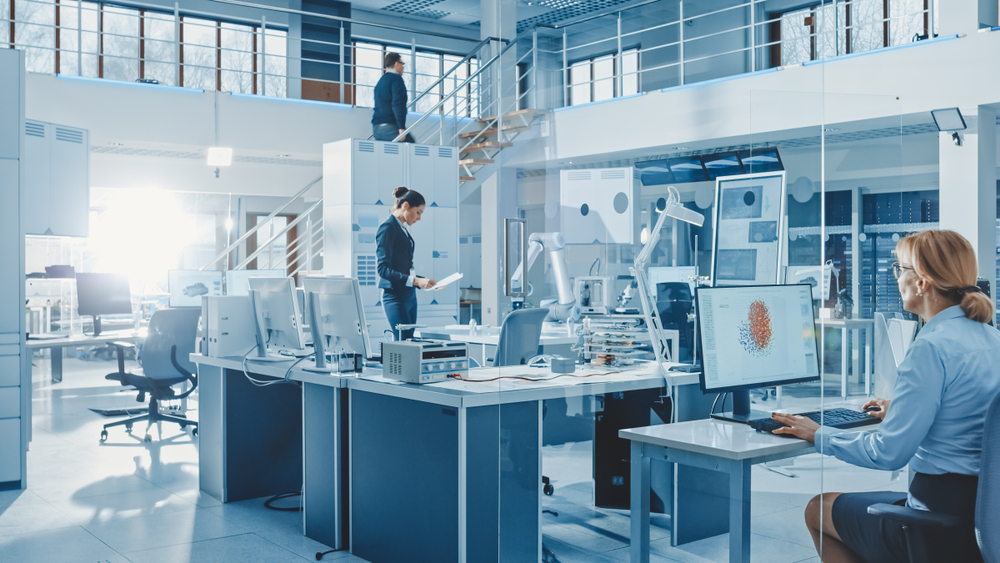
Types of Research Conducted in Dry Laboratories
A dry lab typically refers to a laboratory workspace that does not involve the handling of chemicals, biological materials, or other hazardous substances. Dry laboratories are primarily used for computational research, electronics, material sciences, and other fields that do not require the use of water or chemicals.
Understanding the nature of your research is crucial, as it dictates the design and infrastructure needs of your laboratory.
For example, a lab project focused on computational biology will have different requirements compared to one dedicated to electronics or theoretical physics.
Identify the core activities and processes that will take place in your lab building to ensure that all necessary provisions are accounted for in the design before selecting a dry laboratory builder.
Specific Needs and Preferences of Your Facility
Every research facility has unique needs and preferences that must be considered in the design phase and construction of a dry laboratory. Some key factors to consider include:
- Space Utilization: The design team must determine the amount of space required for occupancy of workers and various activities, including workstations, meeting rooms, and storage areas.
- Environmental Control: Assess the need for precise temperature, humidity control, airflow, and air quality control to protect sensitive laboratory equipment and ensure a comfortable working environment.
- Data Infrastructure: Consider the need for high-speed internet, robust data storage solutions, and secure networking to support intensive computational tasks.
- Ergonomics and Accessibility: Ensure the design promotes a comfortable and accessible working environment for all users, including those with disabilities.
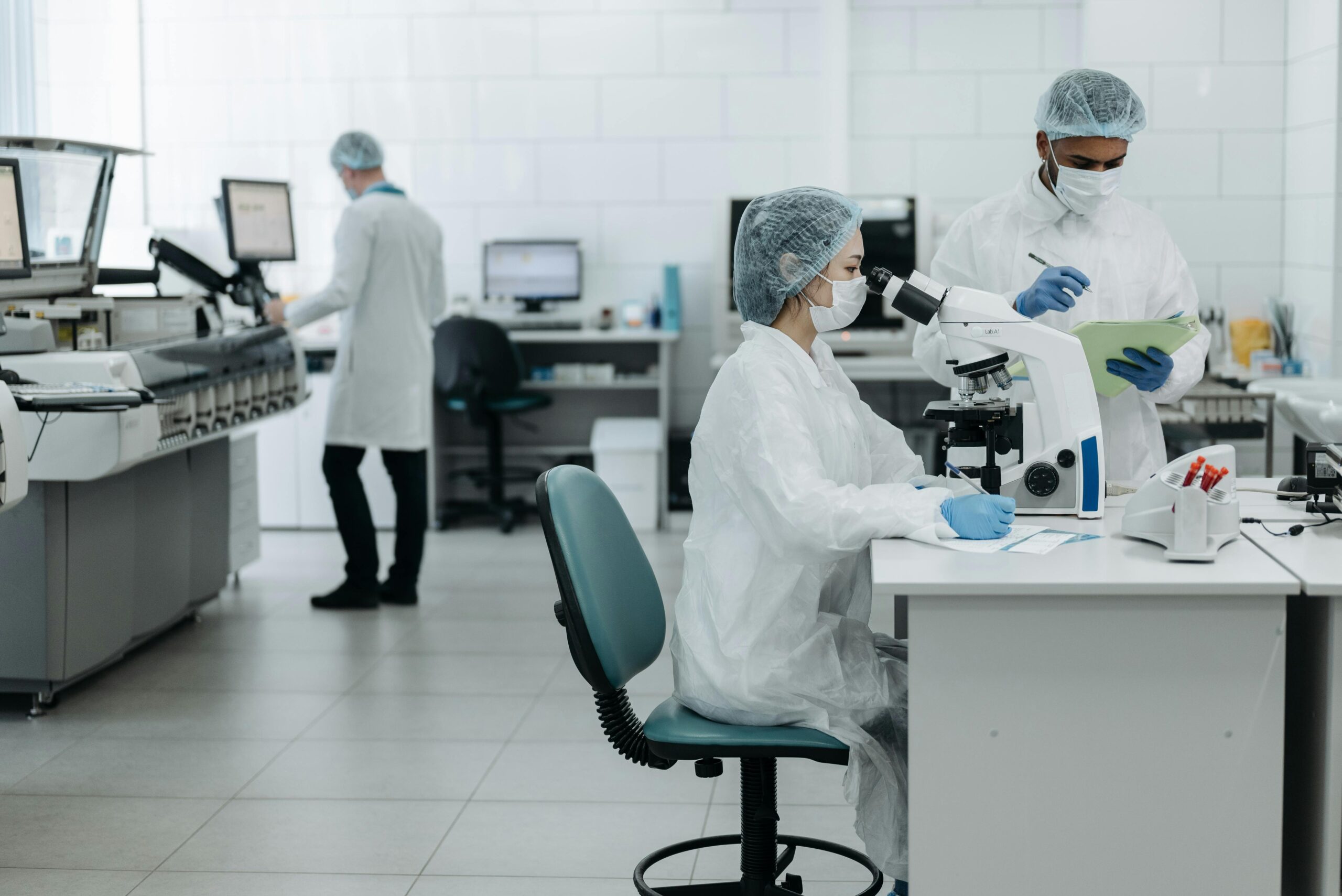
Future Expansion and Flexibility Considerations
Research facilities often evolve, with new projects and technologies emerging over time. It is essential to plan for future expansion and flexibility in your laboratory design. This includes:
- Modular Design: Incorporating modular elements like casework that can be easily reconfigured or expanded as your needs change, while your square feet remain the same.
- Scalable Infrastructure: Ensuring that the infrastructure, such as electrical systems and data systems, can accommodate future growth without requiring major renovations.
- Adaptability: Designing spaces that can serve multiple functions or be repurposed as research priorities shift.
By thoroughly understanding your requirements, you can create a detailed specification that guides the dry laboratory builder in designing a lab and support spaces that meet your current needs and support future growth and innovation. This clarity will also help you communicate your expectations clearly to potential builders, making it easier to evaluate their suitability for your project.
Additional Reading: Modular Laboratory Systems: The Flexible Solution for Dynamic Research Needs
Researching Potential Builders
Finding the right dry laboratory builder requires thorough research and careful consideration. The builder you choose will play a pivotal role in bringing your vision to life, so it’s essential to select one with the right expertise, credentials, and track record. This section will guide you through the process of identifying and evaluating potential builders to ensure you make an informed decision.
Identifying Reputable Builders with Experience in Dry Laboratory Construction
Start by compiling a list of builders who specialize in constructing dry laboratories. Search for companies with extensive experience in the field, as well as those who have completed projects similar to yours. You can identify a reputable dry laboratory builder through:
- Industry Associations: Check with professional organizations and industry associations that may have directories or recommendations for qualified builders.
- Referrals: Seek referrals from colleagues, industry peers, or institutions with similar facilities.
- Online Research: Conduct online searches to find a dry laboratory builder with positive reviews and a strong online presence. Look for case studies, project portfolios, and client testimonials on their websites.
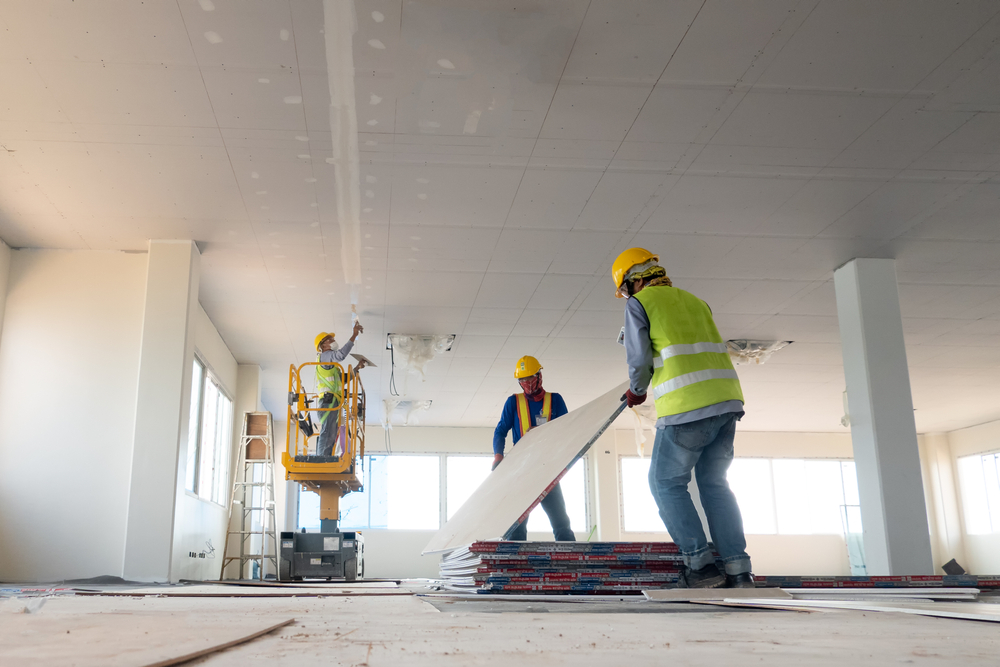
Checking Credentials and Certifications
Ensure that the dry laboratory builder you are considering has the necessary credentials and certifications to undertake your project. Key credentials to look for include:
- Licensing: Verify that the builder holds all required licenses to operate in your region.
- Certifications: Look for certifications related to construction quality, safety, and environmental standards, such as ISO certifications or LEED accreditation.
- Professional Affiliations: Membership in reputable industry organizations can indicate a commitment to staying current with industry standards and best practices.
Evaluating a builder’s past projects and client feedback can provide valuable insights into their capabilities and reliability.
Review the builder’s portfolio, read testimonials and reviews from previous clients to gauge their satisfaction with the performance, communication, and adherence to timelines and budgets of the dry laboratory builder. If possible, visit some of the builder’s completed projects.
By taking the time to research potential builders meticulously, you increase the likelihood of finding a partner who will deliver a high-quality, functional, and future-proof dry laboratory for your research facility.
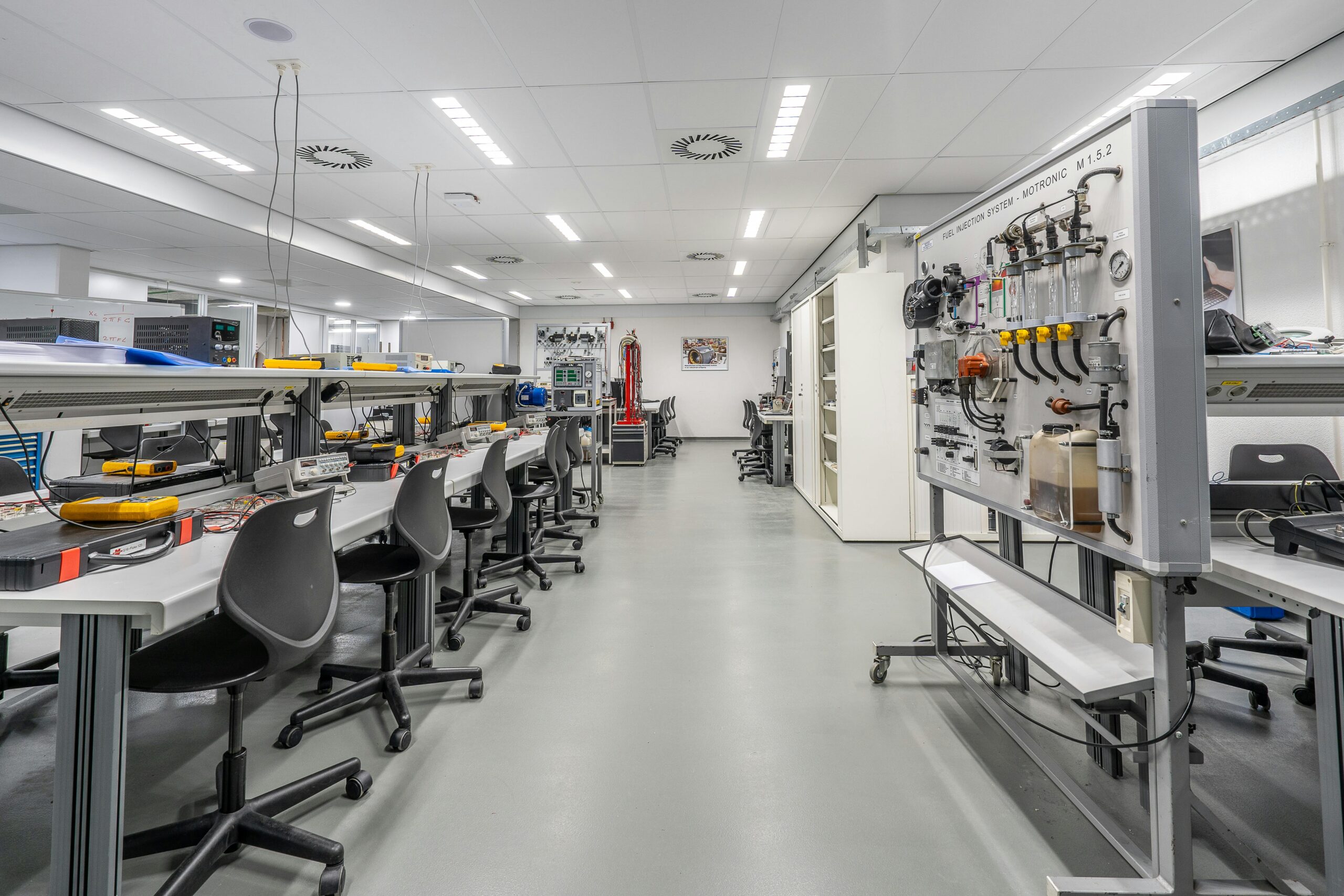
Cost Considerations
Cost is a critical factor in the construction of a dry laboratory, and careful budgeting is essential to ensure your project is completed successfully without compromising on quality.
A comprehensive budget should include initial planning costs like feasibility studies, site assessments, and building design and engineering fees. Additionally, estimate construction costs, including materials, labor, equipment, site preparation and permits. Set aside a contingency fund to cover unexpected expenses that may arise during the construction process.
To ensure you receive a fair price and quality work, it’s important to obtain and compare detailed proposals that break down costs for each aspect of the project from multiple builders.
- Evaluate Scope of Work: Compare the scope of work outlined in each proposal. Ensure that all necessary components, such as HVAC systems to provide the required airflow, electrical infrastructure, and data networks, are included. Some dry lab environments require a controlled environment like cleanroom facilities as well.
- Check for Hidden Costs: Look for any hidden or additional costs that may not be immediately apparent. These can include fees for permits, inspections, or specialized equipment.
- Assess Value for Money: Evaluate the overall value each dry laboratory builder offers. The lowest quote is not always the best option; consider the builder’s expertise, quality of materials, and track record.
Understanding the Cost Breakdown and Potential Additional Expenses
A clear understanding of the cost breakdown and potential additional expenses will help you manage your budget effectively. Key components to consider include:
- Materials and Equipment: Ensure the quality of materials and equipment specified in the builder’s quote meets your standards. High-quality materials may have a higher upfront cost but can provide better durability and performance in the long run.
- Labor Costs: Labor costs can vary significantly based on the complexity of the project and the location. Make sure the labor costs quoted by the dry laboratory builder in the quote reflect the skills and experience required for your project.
- Permits and Inspections: Factor in the costs of obtaining necessary permits and undergoing inspections to ensure compliance with local regulations and standards.
- Project Management Fees: Sometimes, a dry laboratory builder may charge additional fees for project management services. Ensure you understand these costs and what they cover, such as coordination with subcontractors and regular progress updates.
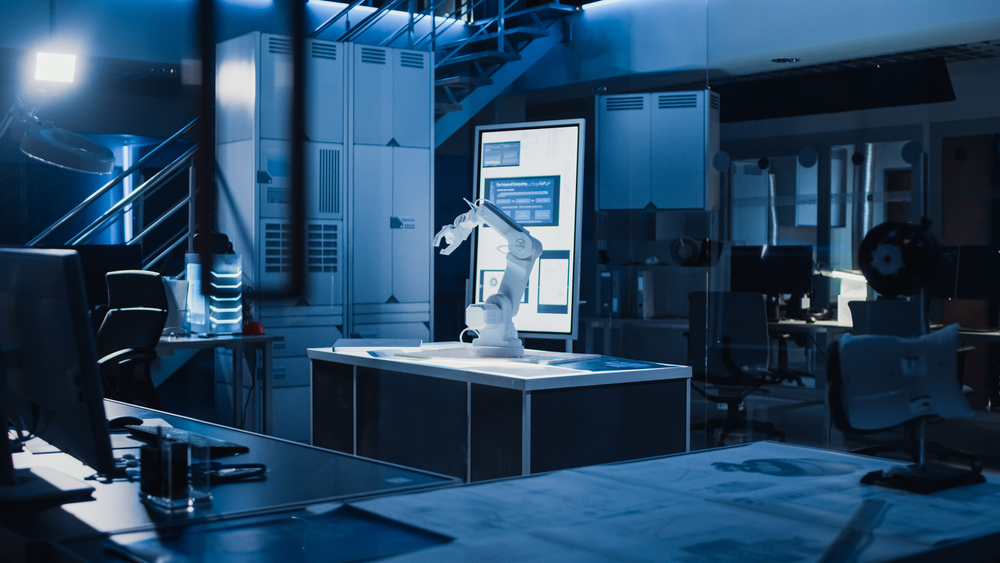
Long-Term Cost Considerations
In addition to the initial construction costs, consider the long-term financial implications of your dry laboratory. These can include:
- Maintenance and Upkeep: Budget for ongoing maintenance to keep your laboratory in optimal condition. This can include regular servicing of HVAC systems, electrical checks, and repairs.
- Energy Efficiency: Investing in energy-efficient systems and equipment can reduce operational costs over time. Consider the long-term savings associated with energy-efficient lighting, HVAC systems, and data centers.
- Upgrades and Expansions: Plan for future upgrades and expansions to accommodate evolving research needs. This foresight can prevent costly renovations down the line.
By carefully considering these cost factors and managing your budget effectively, you can ensure that your dry laboratory construction project is completed within budget and meets your facility’s needs. Transparent communication with a potential dry laboratory builder about costs and expectations will help you avoid surprises and make informed decisions throughout the construction process.

Project Management and Communication
Clear communication is the cornerstone of any successful construction project. It ensures that all stakeholders, including the dry laboratory builder, architects, engineers, and you, the client, are on the same page regarding project goals, timelines, and expectations.
- Establish a schedule for regular updates and progress reports.
- Maintain open channels of communication between all parties.
- Encourage transparency in all communications. This includes being upfront about potential delays or issues and discussing solutions collaboratively.
A builder’s project management skills are crucial to the smooth execution of your dry laboratory construction.
The dry laboratory builder you want must have experience and expertise in management of similar projects, and exhibit strong leadership and problem-solving skills. Additionally, organization and effective management of schedules, resources, and budgets are crucial. Clear timelines and deliverables are essential for managing expectations and ensuring the project stays on track.
A strong, collaborative relationship of trust and respect with your builder can significantly enhance project outcomes. These strategies will help you navigate the complexities of the construction process and achieve a successful outcome for your research facility.
Quality and Compliance
Ensuring quality and compliance is paramount in the construction of a dry laboratory. Adhering to high standards of quality and meeting regulatory requirements not only guarantees the safety and efficiency of your laboratory but also enhances the credibility of your research facility.
The Importance of Quality in Laboratory Construction
Several critical aspects should be considered to ensure the quality of your dry laboratory:
- Material Selection: Choose high-quality materials that meet industry standards and are appropriate for the specific conditions of a dry laboratory. This includes selecting durable, non-reactive materials for surfaces, fixtures, and furnishings.
- Workmanship: Ensure that the dry laboratory builder has a construction team with a proven track record of excellent workmanship. Skilled labor is crucial for precise installations and finishes.
- Technical Specifications: Verify that all technical specifications, such as HVAC systems, electrical wiring, and data networks, meet or exceed industry standards such as American Society of Heating, Refrigerating, and Air Conditioning Engineers (ASHRAE) Standard. Proper technical implementation is essential for maintaining a stable and efficient laboratory environment.

Ensuring Compliance with Regulatory Standards
Compliance with local, national, and international regulatory standards is essential for the safe and legal operation of your laboratory. Important regulations to consider include:
- Building Codes: Ensure the laboratory design and construction comply with local building codes and standards. This includes structural integrity, fire safety, and accessibility requirements.
- Environmental Regulations: Adhere to environmental regulations regarding waste disposal, air quality, and energy efficiency. Compliance ensures your laboratory operates sustainably and responsibly.
- Occupational Safety and Health Administration (OSHA) Standards: Meet OSHA standards for workplace safety, including proper ventilation, ergonomic design, and emergency preparedness.
Collaborating with the Dry Laboratory Builder for Customization
The ability to customize and adapt the design of your dry laboratory is crucial to ensuring that it meets the specific needs of your research facility. Customization and design flexibility allow for the creation of a workspace that enhances productivity, accommodates evolving research demands, and integrates seamlessly with existing infrastructure.
Effective collaboration with your dry laboratory builder is essential for achieving a customized and flexible laboratory design.
Benefits of a Customized and Flexible Laboratory Design
A customized and flexible laboratory design offers several significant benefits:
- Enhanced Efficiency: A tailored design optimizes workflow and reduces bottlenecks, leading to increased productivity and efficiency in research activities.
- Improved Adaptability: A flexible design allows your laboratory to adapt to changing research needs, new technologies, and evolving scientific trends without significant disruptions.
- Cost Savings: Investing in customization and flexibility can lead to long-term cost savings by reducing the need for frequent renovations and upgrades.
- Research Excellence: A well-designed laboratory that meets the specific needs of your researchers can foster innovation, collaboration, and excellence in scientific research.
With customization and design flexibility, you can create a dry laboratory that meets your current needs and adapts to future challenges and opportunities. Collaborating closely with your dry laboratory builder and focusing on key design strategies will help you achieve a state-of-the-art facility that supports and enhances your research endeavors.
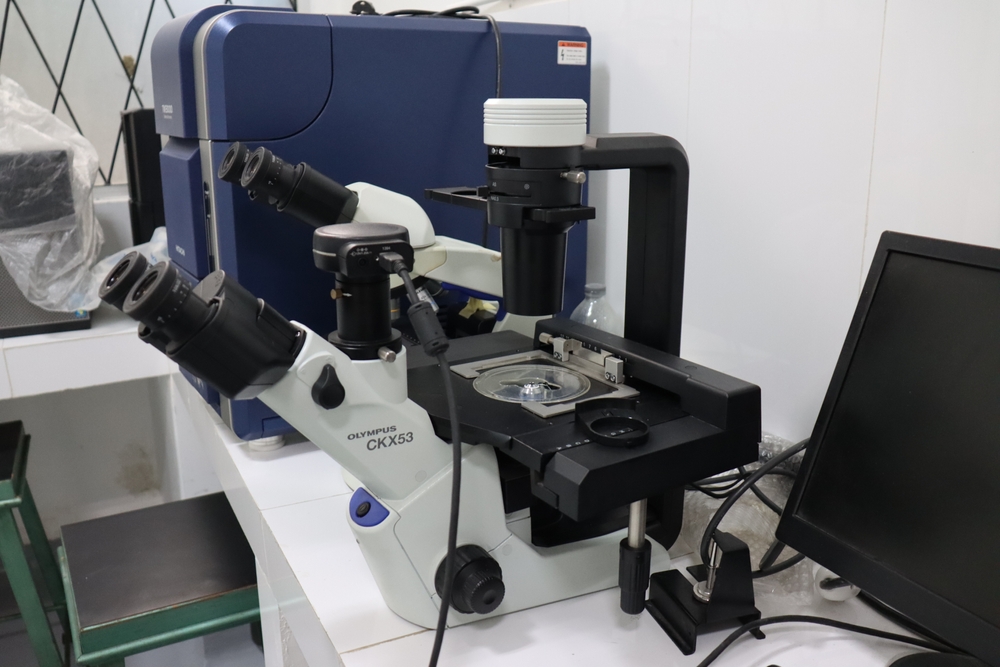
Post-Construction Support
Selecting a dry laboratory builder is not just about the construction phase; it also involves ensuring that you receive adequate post-construction support. This support is crucial for addressing any issues that may arise after the laboratory is completed, ensuring that your facility operates smoothly, and maintaining its functionality over the long term.
Importance of Post-Construction Support
Post-construction support is vital for several reasons:
- Operational Efficiency: Ensures that all systems, lab equipment, and components of your laboratory function correctly from day one, minimizing downtime and disruptions.
- Longevity: Regular maintenance and timely repairs extend the lifespan of your laboratory’s infrastructure and equipment.
- Warranty and Guarantees: Provides peace of mind that any defects or issues will be promptly addressed under the warranty, protecting your investment.
Key Components of Post-Construction Support
Effective post-construction support encompasses a range of services to maintain and enhance the functionality of your laboratory:
- Warranty Services: Ensure that your dry laboratory builder offers comprehensive warranties covering workmanship, materials, and major systems such as HVAC and electrical. Understand the terms and duration of these warranties.
- Maintenance Plans: Regular maintenance is crucial for the longevity of your laboratory, including all the mechanical systems. Discuss with your builder the availability of maintenance plans that include scheduled inspections, servicing of critical systems, and preventive maintenance.
- Repair Services: Establish a clear process for addressing repairs. This includes response times, the availability of replacement parts, and the qualifications of repair technicians.
- Training and Documentation: Proper training for your staff on the operation and maintenance of laboratory systems is essential. Ensure your builder provides thorough documentation, including user manuals, maintenance schedules, and troubleshooting guides.
- Upgrades and Modifications: As your research needs evolve, you may require upgrades or modifications to your laboratory. Verify that your dry laboratory builder offers services to handle these changes efficiently and with minimal disruption to your operations.
Benefits of Effective Post-Construction Support
Effective post-construction support offers numerous benefits for your research facility:
- Reduced Downtime: Prompt and efficient support minimizes downtime caused by system failures or necessary repairs, ensuring continuous research activities.
- Cost Savings: Regular maintenance and timely repairs prevent costly major breakdowns and extend the lifespan of your laboratory’s infrastructure and equipment.
- Enhanced Safety: Proper maintenance and support ensure that all safety systems and protocols are functioning correctly, maintaining a safe environment for researchers and staff.
- Increased Satisfaction: Comprehensive support services lead to higher satisfaction among laboratory users, fostering a positive and productive research environment.
By prioritizing post-construction support, you can ensure that your dry laboratory remains a state-of-the-art facility that supports your research activities efficiently and safely. Choosing a dry laboratory builder who offers comprehensive and effective post-construction support is essential for the long-term success and sustainability of your research facility.

Additional Reading: How to Collaborate with a Clinical Laboratory Builder for Your Facility
Conclusion
Choosing the right dry laboratory builder is a crucial decision that requires careful consideration. A successful partnership with a builder who understands your needs, prioritizes quality and compliance, and offers comprehensive post-construction support can ensure the successful completion of your project and the long-term functionality of your research facility.
Throughout this article, we have explored key factors to consider when selecting a dry laboratory builder, including understanding your requirements, researching potential builders, evaluating expertise, considering cost. We looked at managing the project effectively, customizing the design, ensuring quality and compliance, and securing post-construction support.
By following these guidelines and collaborating closely with your chosen dry laboratory builder, you can create a lab space that meets your specific needs, enhances research capabilities, and fosters a safe and productive environment for your researchers and staff. A well-constructed and well-maintained laboratory space is not only a valuable asset but also a testament to your commitment to excellence in research and innovation.
We hope this article has provided you with valuable insights and guidance as you embark on your dry laboratory construction journey. Remember, the success of your project depends on the careful selection of a dry laboratory builder who shares your vision and values. Choose wisely, and your laboratory will be a beacon of scientific advancement for years to come.
Noteworthy: Genie Scientific has been servicing the laboratory industry for over 40 years. Securing their guidance throughout the process, from finding the best dry laboratory builder to a completed dry lab facility with state-of-the-art equipment, modular cabinets for flexibility and optimized space, and more, can significantly simplify this complicated endeavor.




